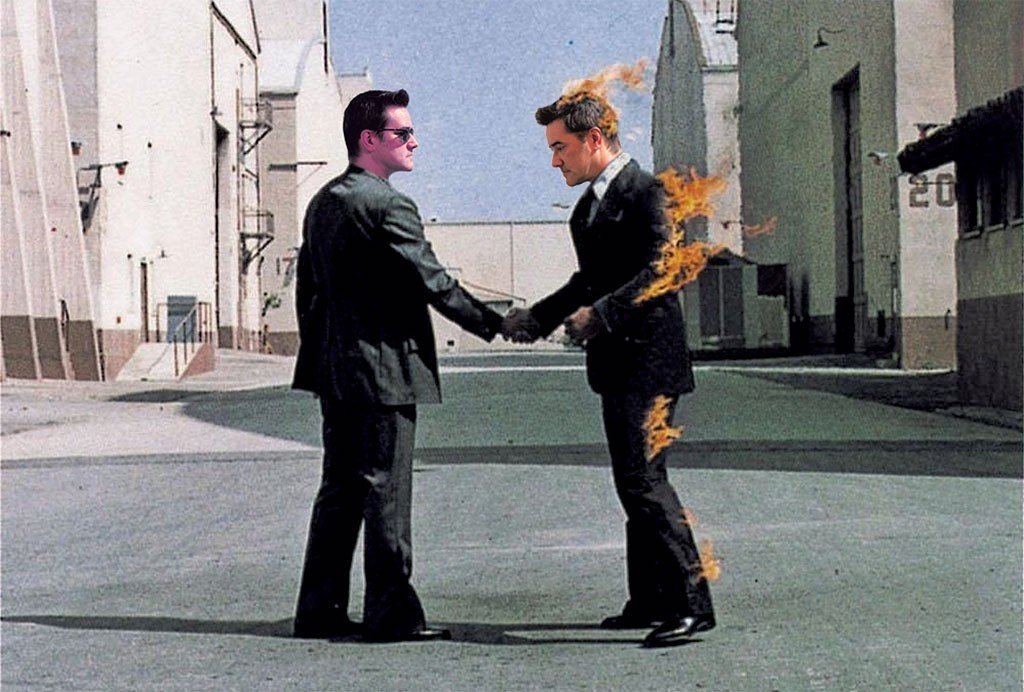In the mid-1960s, the world witnessed an unprecedented cultural shift, one that would redefine music, art, and society’s very fabric. At the heart of this transformation was the psychedelic movement, a kaleidoscopic explosion of colors, sounds, and ideas that challenged the status quo and offered a new perspective on existence. Among the luminaries of this era, Pink Floyd emerged as not just participants but as architects of the psychedelic revolution, crafting soundscapes that transcended the auditory experience to become a mirror of the counterculture landscape.
The inception of Pink Floyd in 1965 marked the confluence of four unique talents: Syd Barrett, Roger Waters, Richard Wright, and Nick Mason. Their early music, characterized by its experimental edge and innovative use of technology, captured the zeitgeist of London’s underground music scene. Barrett’s lyrical genius and distinctive guitar work, combined with the band’s avant-garde approach to composition, set the stage for a new genre of music that would come to define the psychedelic era.
Soundscapes of the Mind

As the 1960s progressed, Pink Floyd’s sonic experiments became increasingly ambitious. Albums like “The Piper at the Gates of Dawn” (1967) and “A Saucerful of Secrets” (1968) showcased the band’s ability to weave complex, abstract themes into their music. These works were not just collections of songs; they were journeys into the mind, inviting listeners to explore the depths of their consciousness. The band’s use of innovative studio techniques, such as tape loops, feedback, and echo effects, alongside pioneering visuals in their live performances, encapsulated the psychedelic experience, making Pink Floyd synonymous with the movement itself.
A Voice for the Counterculture
Pink Floyd’s music was a reflection of the times, a period marked by social upheaval, political unrest, and a collective yearning for change. The psychedelic movement, with its emphasis on peace, love, and expanded consciousness, found in Pink Floyd a voice that resonated with its ideals. The band’s lyrical themes—exploring the nature of reality, the human condition, and the quest for meaning—echoed the existential inquiries that were central to the counterculture.
Challenges and Transformation
However, the journey was not without its challenges. The very forces that propelled Pink Floyd to the forefront of the psychedelic revolution also threatened to tear them apart. Syd Barrett, whose creative vision had been instrumental in defining the band’s early sound, struggled with the pressures of fame and the impact of his LSD use. His departure from the band in 1968 marked a pivotal moment in Pink Floyd’s history, forcing them to redefine their identity in the absence of their founding visionary.
In the wake of Barrett’s departure, Pink Floyd embarked on a period of profound transformation. Roger Waters emerged as the band’s primary lyricist, steering their music towards more structured compositions while maintaining their experimental edge. Albums like “Meddle” (1971) and “Dark Side of the Moon” (1973) reflected this evolution, with the latter becoming one of the best-selling albums of all time. These works showcased Pink Floyd’s ability to blend their psychedelic roots with themes of alienation, war, and sanity, capturing the disillusionment of a generation that had once believed in the possibility of a better world.
Legacy of Innovation
The impact of Pink Floyd on the psychedelic movement and the broader cultural landscape cannot be overstated. Through their music, they not only provided a soundtrack for the counterculture but also pushed the boundaries of what music could be. Their explorations of sound and concept laid the groundwork for countless artists who followed, cementing their legacy as pioneers of the psychedelic revolution.
As the 1960s gave way to the 1970s, Pink Floyd continued to evolve, their music reflecting the changing times. Yet, the essence of what made them a cornerstone of the psychedelic era—their willingness to explore the unknown, to question the nature of reality, and to challenge the listener to think beyond the confines of conventional wisdom—remained at the heart of their work. In doing so, Pink Floyd not only captured the spirit of a generation but also offered a timeless message of exploration and discovery that continues to resonate with audiences around the world.
The Evolution Beyond Psychedelia
As the vibrant hues of the psychedelic era began to fade, Pink Floyd embarked on a journey that would take them beyond the confines of their early sound, exploring new musical territories and thematic depths. The departure of Syd Barrett had left an indelible mark on the band, prompting a period of introspection and innovation that would lead to some of their most celebrated work. This phase of their career was characterized by a more cohesive and conceptual approach to album-making, a departure from the free-form experimentation of their psychedelic beginnings.
The Dark Side of the Moon: A Cultural Phenomenon
The release of “The Dark Side of the Moon” in 1973 was a watershed moment, not just for Pink Floyd but for the music industry as a whole. This album, with its exploration of themes such as time, greed, war, and mental illness, struck a chord with audiences worldwide, resonating with the existential angst of the post-Vietnam era. Its seamless blend of rock, jazz, and blues, coupled with pioneering use of synthesizers and sound effects, created a sonic experience that was both immersive and introspective. “The Dark Side of the Moon” transcended musical genres and cultural barriers, becoming one of the best-selling albums of all time and cementing Pink Floyd’s status as global icons.

Wish You Were Here: An Ode to Absence
Following the monumental success of “The Dark Side of the Moon,” Pink Floyd continued their exploration of complex themes with “Wish You Were Here” (1975). This album served as a poignant homage to Syd Barrett, whose spiraling mental health had led to his estrangement from the band. Songs like “Shine On You Crazy Diamond” reflect the band’s feelings of loss and reflection on the price of fame and creative genius. “Wish You Were Here” delved into the music industry’s cynicism, the alienation of modern life, and the search for authenticity, themes that resonated deeply with a generation questioning the values of a materialistic society.

Animals and The Wall: Social Critique and Personal Struggle
Pink Floyd’s subsequent albums, “Animals” (1977) and “The Wall” (1979), marked a further evolution in their musical and thematic exploration. “Animals” was a scathing critique of the socio-political landscape of 1970s Britain, drawing on George Orwell’s allegory to depict a society stratified into classes of dogs, pigs, and sheep. This album’s darker tone and complex compositions reflected the band’s growing disillusionment with societal structures and the human condition.

“The Wall” represented a culmination of Roger Waters’ narrative songwriting, a semi-autobiographical concept album that explored isolation, loss, and the impact of fame. Its iconic tracks, combined with groundbreaking live performances featuring a literal wall being built on stage, created a theatrical experience that pushed the boundaries of rock concerts. “The Wall” was both a personal confession and a universal statement on the barriers people erect between themselves and others, a theme that has remained relevant across decades.

Legacy and Influence
Throughout the 1970s and into the early 1980s, Pink Floyd’s musical journey reflected the changing landscape of rock music and the broader cultural shifts occurring around the world. Their ability to adapt and innovate, to fuse the personal with the political, and to create albums that were cohesive works of art, set new standards for what rock music could achieve. Pink Floyd’s exploration of the human psyche, societal critique, and existential inquiry paved the way for subsequent generations of musicians and artists, influencing a wide range of genres from progressive rock to electronic music.
The band’s legacy is not just in their record sales or the awards they have won but in their impact on popular culture and their ability to articulate the hopes, fears, and dreams of a generation. Pink Floyd’s music, with its rich textures and profound themes, continues to inspire and challenge listeners, offering a window into the complexities of the human experience.
Enduring Resonance in Contemporary Culture
Decades after their zenith, Pink Floyd’s influence permeates various facets of contemporary culture, from music and cinema to art and technology. Their innovative use of soundscapes, thematic depth, and visual storytelling set a benchmark that artists across genres strive to emulate. Pink Floyd’s discography, rich with existential musings and sonic explorations, continues to attract new generations of fans, proving the timeless appeal of their work. This enduring resonance is a testament to the band’s ability to connect with the fundamental aspects of the human condition – our fears, our hopes, and our dreams.
Technological Pioneers and Visual Spectacle
Pink Floyd’s legacy is not confined to their musical innovations; they were also pioneers in integrating technology and visual art into the concert experience. Their live performances were legendary, featuring elaborate stage designs, innovative lighting, and pioneering use of projection and quadraphonic sound systems. These elements combined to create immersive experiences that were far ahead of their time, influencing the way live music is presented to this day. The band’s collaboration with artists like Storm Thorgerson and Hipgnosis on album covers further cemented their reputation as visionaries who blurred the lines between music, art, and performance.
Influence on Modern Music and Artists
The ripple effect of Pink Floyd’s influence can be seen in the work of countless artists and bands, from the progressive rock of Tool and the experimental sounds of Radiohead to the electronic landscapes of Daft Punk and the ambient work of Brian Eno. Their willingness to experiment with structure, theme, and technology has inspired musicians to push the boundaries of their own creativity. Moreover, Pink Floyd’s conceptual approach to album-making, where records are crafted as cohesive wholes rather than collections of individual songs, has left an indelible mark on the music industry, encouraging artists to think of albums as narrative or thematic journeys.
The Future of Floyd’s Legacy
As we look to the future, Pink Floyd’s legacy is secure, not just in the annals of music history but in the continuing influence they wield over the evolution of art and culture. The band’s work remains a benchmark for artistic innovation, a source of inspiration for those who seek to challenge the conventions of their craft. The digital age has facilitated a renewed interest in Pink Floyd, with their music finding new life through streaming platforms, remastered releases, and virtual reality experiences that introduce their psychedelic soundscapes to a new digital frontier.
Conclusion: A Timeless Journey
Pink Floyd’s journey through the landscapes of music and culture has been nothing short of extraordinary. From the psychedelic experiments of the 1960s to the conceptual masterpieces of the 1970s and beyond, they have left an indelible mark on the world. Their music, a tapestry of sound and meaning, continues to offer solace, inspiration, and a sense of wonder to those who venture into their auditory universe. Pink Floyd transcended the role of musicians to become philosophers of the modern age, exploring the depths of the human experience and the outer reaches of the imagination. As we move forward, the legacy of Pink Floyd remains a beacon, guiding us through the ever-changing landscape of culture and reminding us of the power of art to illuminate the mysteries of the human heart.
